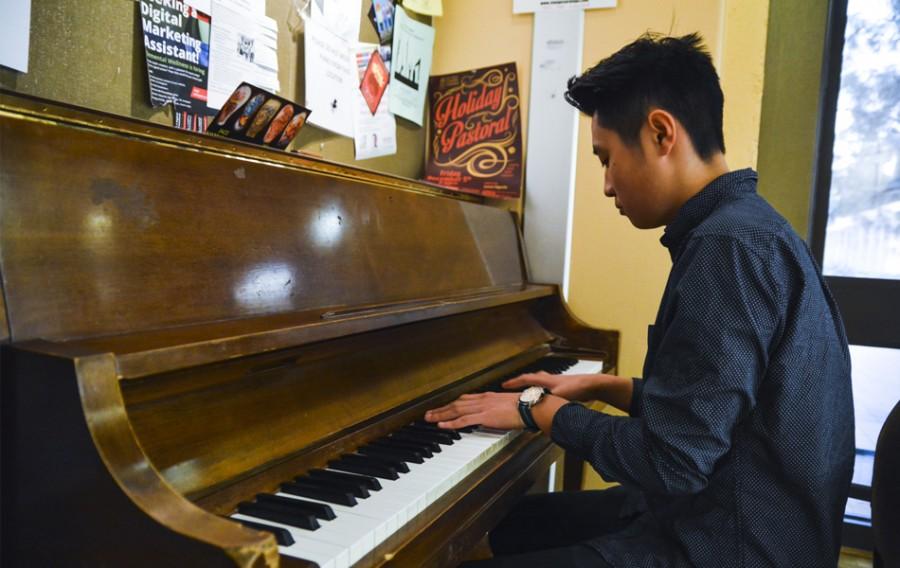Cafeteria concertos and sonatas
More stories from Harold Shi
Feet shuffle in and out between the doors of De Anza College’s Campus Center as students rush to find an empty table in the cafeteria.
Stopping to grab a quick bite before my next class, I hear a familiar sound playing in the background – the sound of the lone piano of the cafeteria – its soft and sweet melody almost drowned out by the noisy commotion of a hundred hungry college kids
chit-chatting away.
Deciding to stay for a few extra minutes, I dropped my bags, stopped what I was doing and just listened. While what I heard in those next few minutes wasn’t exactly on par with what you’d find at a Mozart concerto or in Beethoven’s “No. 5 Sonata,” you wouldn’t expect your average college student to be playing those pieces anyway.
But it was music to the ears, nonetheless.
William Tan, 19, is a regular, and one of the brave few to come and show off their skill.
I watch as he walks up to the unimposing musical instrument sitting in the corner of the cafeteria, takes his time, and studies it, before sitting down and starting to play.
I can’t help but feel an air of confidence surrounding the liberal arts major and piano expert, who has amassed a steady ten years of experience.
When asked what he thinks about the heavy lunch-time rush and the possibility of being judged, he said the question has honestly never crossed his mind.
“People are unpredictable,” Tam said. “For the most part, you never know what they’re going to say, so why would you even care?” Tam said. “For me, playing the piano is a way for me to practice, to keep my fingers in shape, you could say. It’s almost like an exercise, but for my fingers.”
The rising and falling of chords makes my emotions jump from one spectrum to another, as I enter a different world.
Not everybody may have the same experience playing as Tam does, most are looking for the same end-result: to have a little bit of time to themselves.
Rufio Poldo, 22, is just one of those people. It was a Thursday evening, with hardly any students remaining in the cafeteria when I sneaked up on Poldo and tapped him on his shoulder, interrupting his set.
“I don’t play often, but when I do, it’s mainly to relax, to relieve stress,” Poldo said, “like a quick break, sort of. I like the sound of the piano very much, but I could be better.”
The common theme I came across as I asked these pianists of De Anza why they were there, playing what they were playing, was that there was no real end-goal or purpose.
As Tam and Poldo said, the piano became a way for students to pass the time, to relearn old notes and to blow off some steam before diving back into the grind of classes and the fast pace of student life.
Abiodun Freeman was no exception to this rule. The 25-year-old film and television major sat down in the
now-familiar seat.
“I’m always here. I don’t play any specific songs or pieces, I just improvise,” Freeman said. “Taking both the Piano and Musical Theory classes at De Anza helped, and I play now because I’m a music producer, and it helps me focus on my music.”
For the music producer, it was an unleashing of the much-needed mental creativity that a student like me can certainly appreciate. For others, it’s a way to get loose, settle down and tune out the noise in the world.
As one pianist leaves, another comes in to fill the silence.
They come, they play, and they go. And through it all, they take with them a small reminder, a throwback of sorts to a bygone era long since forgotten, a time where music and melody were an extension of our bodies.
And if you listen closely enough, you may just hear them playing.



